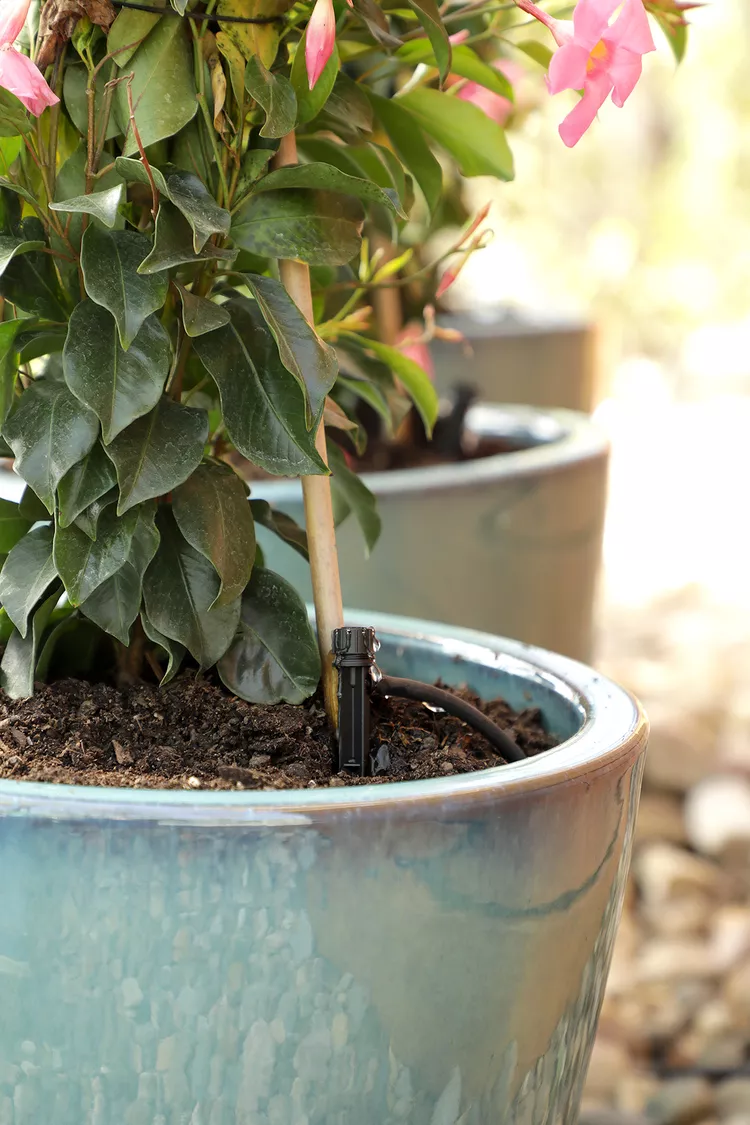- Working Time: 4 hours
- Total Time: 4 hours
- Skill Level: Intermediate
- Estimated Cost: $60
You're leaving for summer vacation and realize you don't want to come home to scorched, dead flowers (or pay a plant sitter to come over to water). You can make a DIY drip irrigation system for potted plants and container gardens from poly pipes and plastic piping parts from the hardware store. The best part is that you can customize your system to fit your garden's size and care needs, unlike store-bought systems that may require moving your heavy containers. Follow these steps to create your irrigation system for container gardens.
What You'll Need
Equipment / Tools
- Tape measure
- Tape
- PVC pipe cutting saw, or a PVC cutting tool (for cutting the poly tubing)
- Hammer
- Drip irrigation hole punch
Materials
- Two-way garden hose connector (1/2" faucet hose fitting)
- Irrigation timer
- Pressure regulator
- Mainline drip irrigation hose (1/2" poly drip irrigation tubing)
- Plant containers
- Poly tubing end cap
- Irrigation micro tubing (1/4" vinyl micro tubing)
- Drip line connectors
- Drip hose goof plugs (to patch holes that are mispunched)
- Potting soil
- Plants
- Irrigation drippers with spikes, one for each pot
Instructions
Step-by-Step Instructions
You can opt to pick up the list of supplies from the hardware store or use a pre-assembled drip irrigation kit ($42, The Home Depot). For a completely no-worry container garden, attach your drip line to a timer so you can just set it and forget it, which can be especially handy when you're on vacation.
-
Attach 2-Way Garden Hose Connector to Outdoor Water Faucet
Attach the two-way garden hose connecter to the outside faucet. Attach an irrigation timer to one end of the hose connector. Secure the pressure regulator to the timer.
-
Attach Poly Main Line Tubing to Hose Fitting
Push the tubing onto the hose fitting. Tighten the collar over the tubing.
-
Design Tubing Layout
Lay out the tubing and pots to determine the design. Measure where each pot is and mark the tubing (you can use little pieces of tape to mark the tubing). Then, cut the end of the tubing and cap it. Finally, anchor the tubing and hammer down the anchors for security.
Measure the length from the marked spots on the tubing to where the drip head will be inside the pot (add a few extra inches to allow for slightly moving the pots if needed).
-
Install the Irrigation Tubing
Punch a hole in the mainline poly tubing using the drip irrigation hole punch at every spot you marked. If you punch a hole in the wrong spot, it's not the end of the world—that's why there are goof plugs. Attach a dripline connector first to the mainline tube, then attach the micro tubing drip hose onto the other end of the connector.
-
Install Irrigation Drippers
Plug dripper heads into the open end of the micro tubing, and then put them in your container. Center the dripper head in each pot, just to one side of where you plan to insert your plants (the dripper's spike is sharp, so it's easy to insert into the soil). Fill your containers with soil—making sure you bury the tubing under the soil. Then add your plants and enjoy.




















